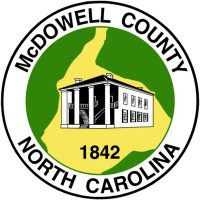I thought that it would be appropriate that my first blog for 2008 be a topic that we all love….TAXES! Annette Dunlap, MBA, with NC State University provided these tax tips for agricultural producers. Enjoy!
For explanations, or a more comprehensive list, contact your CPA or tax advisor, or check out the Internal Revenue Service’s web site (www.irs.gov), or the NC Department of Revenue web site (www.ncdor.com).
Optional Standard Mileage Rate. The rate is 48.5 cents per mile for 2007, and increases to 50.5 cents per mile in 2008. The rate for medical mileage is 20 cents per mile (up from 18 cents per mile in 2006), and the charitable mileage rate remains at 14 cents per mile, as it was in 2006.
Depreciation Methods. For property placed in service, farmers must use one of the following depreciation methods:
(1) The 150 percent declining balance method over the GDS (General Depreciation System) recovery period, switching to the straight line method when that method yields a greater deduction.(2) The straight line method over the GDS recovery period.
(3) The 150 percent declining balance method over fixed ADS (Alternative Depreciation System) recovery periods, switching to the straight line method when that method provides a greater deduction.
(4) The straight line method over fixed ADS recovery periods.
Single-Purpose Agricultural Structures. The recovery period for single-purpose agricultural structures is 10 years. Greenhouses that have an area set aside for retail sale are considered multi-purpose agricultural structures.
Deductions for Meals. Beginning in 1998, 100 percent of the cost of business meals for employees is deductible if meals are at and for the convenience of the employer, no
longer limited to 50%.
Business Trip Expenses. Beginning January 1, 1994, business trip expenses for a taxpayers’ spouse, dependents or other individuals cannot be deducted unless those individuals are bona fide employees traveling with the taxpayer for a business purpose.
New Contribution Rules. Beginning in 2007, individuals who give separate cash contributions (gifts) of any amount are required to obtain a receipt from the organization receiving the donation. This documentation must be in writing and must be contained in the taxpayer’s file before the filing of 2007 tax returns.
Estimated Tax Payments. To avoid potential penalties, taxpayers with a 2007 adjusted gross income (AGI) of $150,000 or less should make estimated tax payments of withholdings equal to their 2006 taxes, or make prepayments equal to 90 percent of their 2006 taxes. If taxpayers’ 2007 AGI exceeded $150,000, they must pay a sum equal to 110 percent of their 2006 tax or 90 percent of their current year’s return. Similarly, if 2007 income is 40% higher than 2006, taxpayers must follow these estimated tax guidelines. Payments are due by March 1, 2008 with the tax return if no estimated tax payments were made for 2007.
Self-employed health insurance deduction. The deduction for health insurance expenses of self-employed individuals and their spouses and dependents is 100% in 2007.
Qualified long-term care insurance. (Self-employed) A qualified long-term care insurance contract will generally be treated as an accident and health insurance contract. The deduction for 100 percent of health insurance expenses of self-employed individuals applies to long-term care insurance premiums.
NORTH CAROLINA TAX CREDIT POINTERS
Property Taxes Paid on Farm Machinery. North Carolina allows a credit of up to $1,000 for the amount of property taxes paid on farm machinery by an individual farmer, general partners or an “S” corporation engaged in the business of farming. NOTE: These and other credits can be missed; however, they are now listed specifically in the North Carolina tax instruction booklet. Credits include: Gleaning credit, and a business credit to stimulate economic growth in tiered counties.




